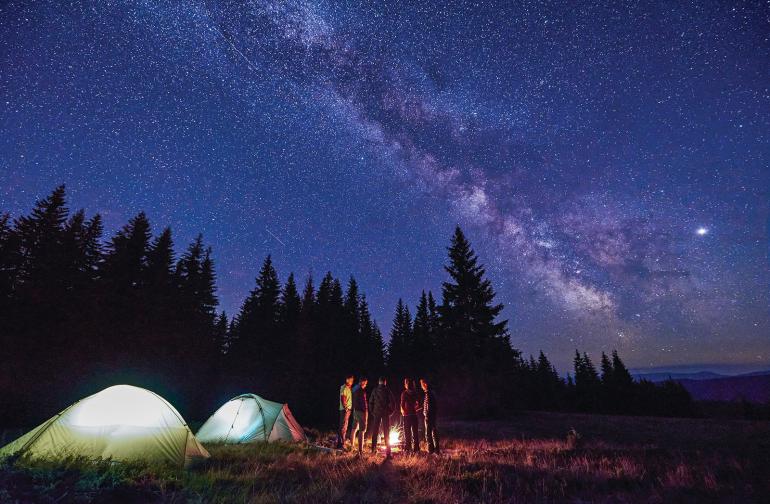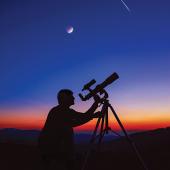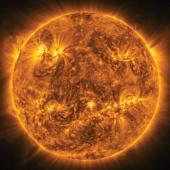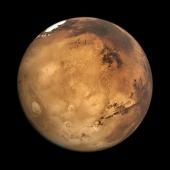Phantom Moon
Explaining the ghostly silhouettes of spring.
Spring can be a sometimes thing in Montana—a mix of sprouting green, mud, late snows, and frost-nipped (and deer-nipped) tulips coming up as best they can. But the heavens proclaim the season regardless; the Big Dipper swings high in the north in the evening, and the constellation of Leo the lion prowls high across the south. Right on schedule.
Spring also happens to be the best time to pay attention to the crescent moon when it hangs in the western sky after sunset. For this is the season when celestial geometry places that evening waxing crescent relatively high in the sky, and the phantom-like phenomenon called “earthshine” is most noticeable on the night side of the moon.
Leonardo da Vinci thought the illumination came from sunlight reflected by Earth’s oceans, though we realize today that the sunlight is most efficiently reflected by Earth’s clouds.
The best dates to observe the effect this year are the several nights after the new moons of April 27 and May 26. As the moon slips out of the new moon alignment into the evening sky, its sunlit side starts to come into view as a bright, slim crescent along the moon’s curved rim. And as the sky darkens, the moon’s night side can also be seen faintly illuminated, filling out the moon’s round shape as night falls and the moon sinks toward its setting.
What faintly illuminates the moon’s night side is the Earthly equivalent of moonlight here. At the new moon lineup of sun, moon and Earth—and in the several days after—a lunar observer would see a bright, sunlit, “full Earth” (or nearly so as the moon slips out of line) shining in the lunar nighttime sky. Sunlight reflected from the bright Earth hits the moon, and what isn’t absorbed by the lunar surface bounces back to our eyes on Earth. This makes the “Earth-lit” night surface of the moon faintly visible to us as darkness falls, cradled by the bright and directly sunlit lunar rim.
The effect is also referred to as the “ashen light,” or “the old moon in the new moon’s arms.” It was described in the 16th century by none other than Leonardo da Vinci. He thought the illumination came from sunlight reflected by Earth’s oceans, though we realize today that the sunlight is most efficiently reflected by Earth’s clouds.
We need a crescent moon to best see the effect.
The phenomenon can be also be seen during the waning crescent moon phase in the pre-dawn eastern sky (when it might best be called “the new moon in the old moon’s arms”) for the several days before it slides into the new moon lineup. As always, binoculars can enhance the view, and can allow you to make out the darker patches on the lunar surface that mark the Man-in-the-Moon face.
But what is it about spring that makes this curiosity most prominent now? In Northern Hemisphere spring, our land-heavy hemisphere is nodding toward the sun, and some suggest that residual high-latitude ice and snow reflect more sunlight, making earthshine on the moon a little brighter and that much easier to see.
As the moon moves in its orbit from night to night and its phase grows toward full, its brightness begins to wash out what we can still see of the moon’s night side—and the Earth’s correspondingly shrinking phase as seen from the moon provides less reflected light. Thus, we need a crescent moon to best see the effect.
So this spring, whether it’s mud or snow or sprouting green under your feet, consider going out in early evening to look for the Big Dipper high north and Leo stalking high south. And at the appointed times, just after the new moons, look also for the young crescent moon hanging in the western sky. You’re likely to see it hoisting a phantom moon in its golden horns.
Jim Manning is the former executive director of the Astronomical Society of the Pacific. He lives in Bozeman.












